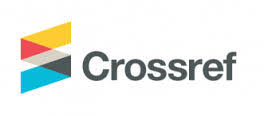The Possibility of Using the Electronic Control at Jordanian Public Universities and the Obstacles that Hinder its Use from the Point of View of the Auditors of the Jordanian Audit Bureau
DOI:
https://doi.org/10.59759/business.v2i1.119Abstract
The study aimed to identify the possibility of using electronic control in the Jordanian public universities and the obstacles that impede its use from the point of view of the auditors of the Jordanian Audit Bureau. The study was conducted on auditors of the Audit Bureau at public universities. In order to measure the variables of the study, a questionnaire was designed and arbitrated by academics in Jordanian universities, and the descriptive analytical approach was used. Due to the small size of the study population of (40) auditors, the comprehensive enumeration method was used, and the number of valid questionnaires for analysis was (34), the study concluded that there is a significant possibility to apply (dimensions of financial, accounting, and administrative electronic control) arranged according to statistical importance in auditing processes, and that there are statistically significant obstacles to the electronic control. The dimensions of electronic control came to a high degree (financial control, accounting control, administrative control) arranged according to statistical importance and obstacles to apply electronic control to all fields to a moderate degree, and that one of the most important obstacles to the application of the electronic control is the universities’ fear of disclosing the financial data. The study recommended the need to apply the electronic control in its all fields in public universities and to remove the obstacles that hinder its application.
Downloads
References
Albitar, K., Gerged, A., M., Kikhia, H., and Hussainey K. (2020). “Auditing in times of social distancing: The effect of COVID-19 on auditing quality”. International Journal of Accounting and Information Management. In Press.
AL-Sharairi, M. Al-Hosban, F. and Thnaibat, H.(2018), The impact of the Risks of the Input of Accounting Information Systems on Managerial Control, Accounting Control and Internal Control in Commercial Banks in Jordan, International Journal of Business and Management, V(13), N(2).
Al-Sharairi, J. (2011), The Reality and Constraints of Using Analytical Procedures in the Control of Public Fundl: Jordanian Aulit Bureau, European journal of economics, finance and administrative, soiences, I(34).
Bierstaker, J, Burnaby, P. and Thibodeau, J. (2013), The Impact of Information Technology on the Control Process: An Assessment of the State of the Art and Implications for the Future, university of massach usetts, USA, managerial auditing journal, V(1), N(2), P 159-164.
Fusi, F., and Feeney, M. K. (2018), Electronic monitoring in public organizations: evidence from US local governments, Public Management Review, 20(10), 1465-1489.
Liang, D., Lin, F., & Wu, S. (2001). Electronically auditing EDP systems: With the support of emerging information technologies. International Journal of Accounting Information Systems, 2(2), 130-147.
López-Laguna, A. B., Espinoza-Aguilar, M. D. L., Macías-Brambila, H. R., & González-Del Castillo, E. E. (2016), The importance of administrative control in companies of the mexican chamber of construction industry in Jalisco: evidence for compliance with the UN Global Compact, Ecorfan journal-spain, P 3-4.
Mendes, M.; Suomi, R. and Passos, C. (2014), Digital Communities in a Networked Society: E-Commerce, E-Business, and E-Government. Kluwer Academic Publishers, New York, USA.
Samukri. (2015), Influencing effective Internal Control System and implementation of financial accounting information system on the Quality of information system research, Journal of Finance and Accounting, 6(11).
Sultan, M. (2015), Evaluating the Effect of Financial Audit Conducted by State Audit Bureau of Kuwait on Public Institutions, Accounting organizations and society, V(32), N(1-2), p 22-38.
Uma Sekaran and Roger Bougie, (2016), Research Methods for Business A Skill-Building Approach, Copy right © 2016, 2013 John Wiley & Sons Ltd.
Downloads
Published
How to Cite
Issue
Section
License

This work is licensed under a Creative Commons Attribution-NonCommercial 4.0 International License.






